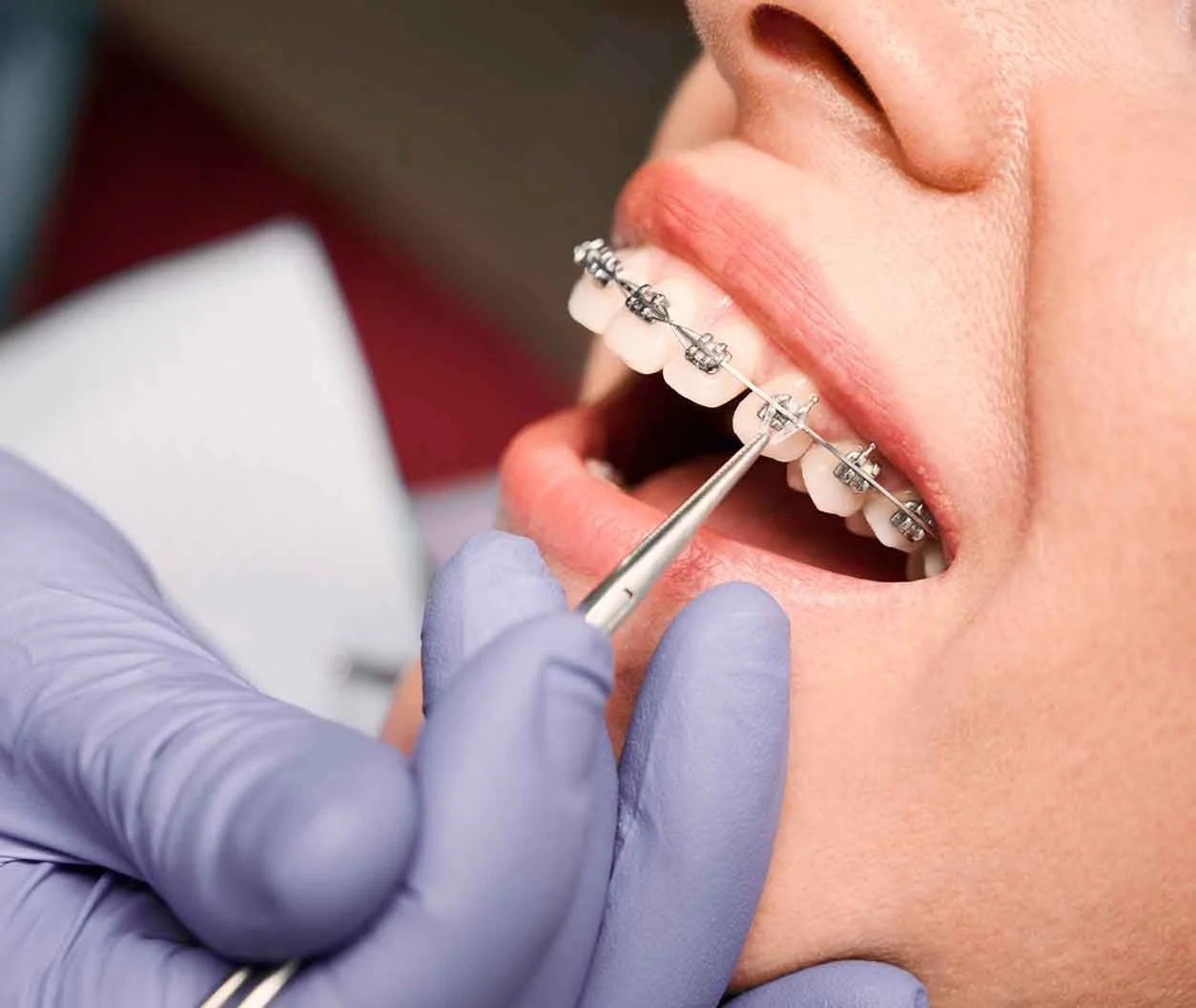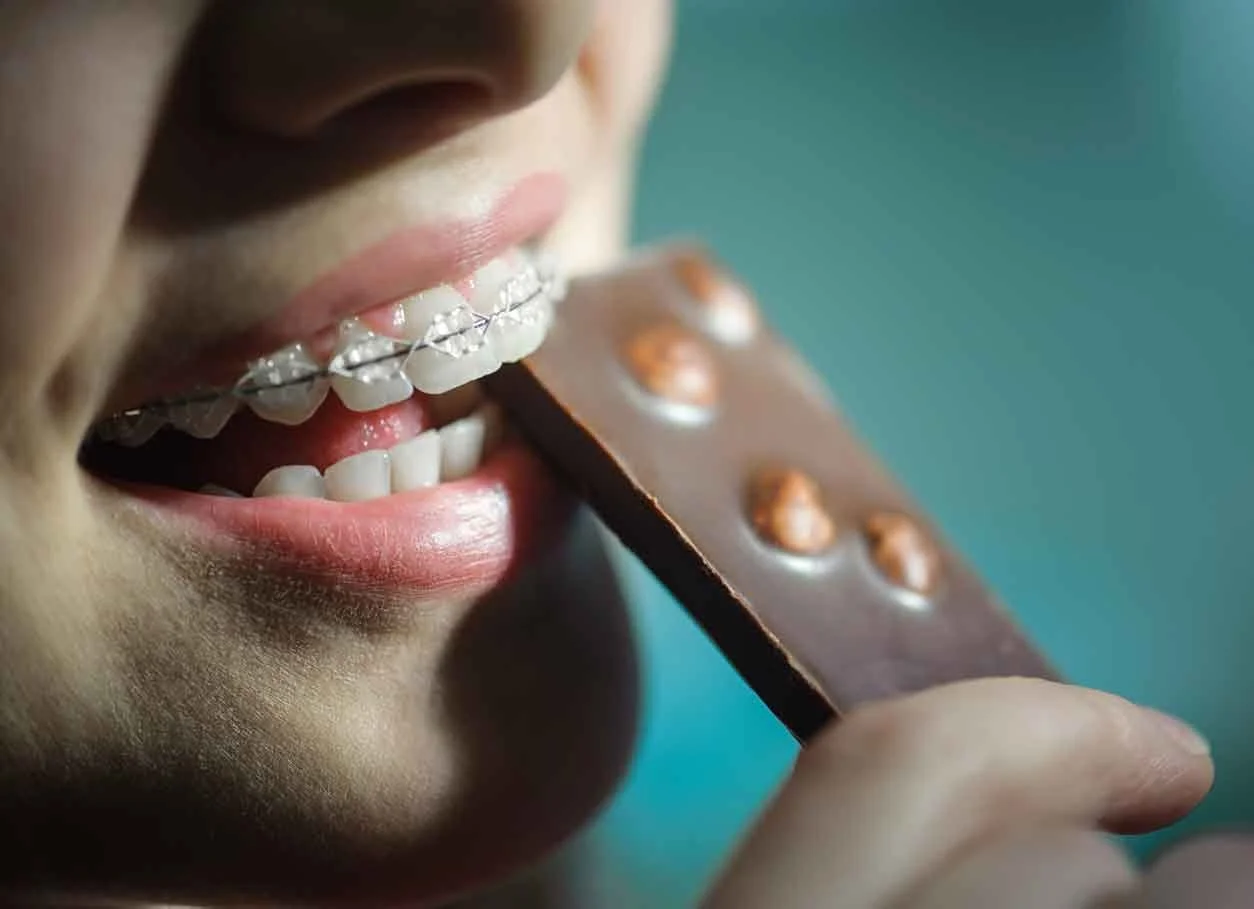Do Braces Hurt? Tips And Advice On How To Stop Braces Pain
Braces are a fundamental tool in modern dental treatment, commonly used to correct misaligned teeth and improve oral health. While they are highly effective in achieving long-term dental goals, it's not uncommon for individuals to experience some level of discomfort or pain during their treatment. This discomfort can range from mild irritation to more pronounced pain following adjustments.
Recognising this, we aim to provide practical and effective strategies to help reduce or eliminate the pain associated with braces. Our goal is to make your teeth straightening journey as comfortable as possible.
Why do braces hurt?
Braces pain is caused by discomfort or pain primarily due to the pressure they exert on teeth to realign them. This pressure, necessary for the braces to be effective, can lead to a sensation of soreness, tooth pain or discomfort. Braces hurt particularly after it is first fitted or following an adjustment appointment. This type of pain is typically a sign that the braces are functioning as intended, as they gradually move teeth into their correct positions.
However, it's crucial to distinguish this normal adjustment pain from more serious issues. Normal adjustment pain, or braces pain, is generally mild to moderate and subsides within a few days. This pain can be managed with over-the-counter pain relief and other home remedies.
In contrast, severe, sharp, or persistent pain, or pain accompanied by signs of infection (such as swelling, excessive redness, or bleeding), is not typical and warrants immediate attention. Such symptoms could indicate problems like improper brace fitting, broken wires, or an underlying dental issue.
Therefore, when wearing braces, it's essential to consult an orthodontist if you experience severe or persistent pain or have any concerns that the pain you're feeling while wearing braces is not regular braces pain. An orthodontist can assess whether the pain is a normal part of the adjustment process or a sign of a more serious problem that needs immediate attention. Regular check-ups are also important to ensure the braces are adjusted correctly and monitor the treatment's progress.
Immediate Braces Pain Relief Methods
Consuming cold foods and drinks can be a simple yet effective way to alleviate pain and reduce inflammation caused by braces. The cold temperature helps to numb the affected area, providing temporary relief from discomfort. This numbing effect is particularly beneficial after an adjustment when the teeth and gums may be more sensitive.
Additionally, the cold can help reduce inflammation, which often contributes to the discomfort experienced with braces pain. Options like ice cream, cold smoothies, ice packs, or even just sipping on ice water can be soothing.
Over-the-counter pain relief medications can be a valuable aid in managing braces pain. Medications such as ibuprofen or acetaminophen are commonly used. It's important to follow the dosage instructions on the packaging and not exceed the recommended amount. These medications should be used as directed and only for short-term relief. If pain persists, it's advisable to consult with an orthodontist.
Topical anaesthetics, such as gels or ointments containing lidocaine or benzocaine, can be applied directly to the gums or other sore areas in the mouth. These anaesthetics work by temporarily numbing the area, providing immediate relief from pain and discomfort. They are particularly useful in managing braces pain with spot treatment of areas where braces hurt.
However, they should be used sparingly and according to the product instructions, as overuse on areas where braces hurt can lead to further irritation or side effects. As with any medication, consulting with a doctor or orthodontist is recommended if there are any concerns or if the pain in the teeth and gums persists.
Long-Term Comfort Strategies To Relieve Braces Pain
Orthodontic wax plays a crucial role in preventing irritation from braces. Apply orthodontic wax to the brackets and wires of braces creates a smooth barrier between the metal parts and the sensitive tissues of the mouth.
This barrier helps to prevent the braces from rubbing against the inside of the lips, cheeks, or tongue, which can cause sores or irritation. Orthodontic wax is particularly useful when first getting braces or after an adjustment when the braces hurt because the mouth is adjusting to the new positioning of the braces. It's easy to apply and can be removed and reapplied as needed.
During periods of heightened sensitivity, such as after getting braces or following an adjustment, a diet of soft foods can be beneficial. Soft foods require less chewing effort and are less likely to irritate sore gums or teeth. Examples of soft foods include soups, yoghurts, smoothies, mashed potatoes, scrambled eggs, and pasta. These foods help in reducing the strain on the teeth and gums, providing comfort during the adjustment period when braces hurt the most.
Maintaining good oral hygiene is paramount in preventing additional discomfort when wearing braces. Braces can trap food particles and increase the risk of plaque buildup, which can lead to tooth decay and gum disease.
Regular brushing and flossing are essential to remove food debris and plaque. Brushing after every meal and using a floss threader or water flosser to clean between the braces and teeth effectively is advisable.
An antiseptic mouthwash can also help reduce bacteria and maintain a healthy oral environment. Good oral hygiene practices not only keep the teeth and gums healthy but also contribute to a more comfortable braces experience.
Braces Pain: What to Avoid
When wearing braces, it's important to avoid certain foods and habits that can exacerbate pain or cause damage to the braces. Here's a comprehensive list:
Hard Foods: These can break or damage the wires and brackets of braces. Examples include nuts, hard candies, and ice.
Sticky Foods: Sticky foods can get caught in braces and are difficult to clean, potentially leading to tooth decay. They include chewing gum, caramel, and toffees.
Chewy Foods: Foods that require a lot of chewing can increase discomfort and strain on braces. This category includes bagels, liquorice, and tough meats.
Crunchy Foods: These can cause discomfort and damage braces. Examples are popcorn, chips, and certain raw vegetables.
High-Sugar Foods and Drinks: Excessive sugar can lead to tooth decay, especially with braces. Avoid sugary sodas, candies, and snacks.
Biting Nails or Pencils: Such habits can bend or break the brackets and wires of braces.
Using Teeth as Tools: Opening packaging or bottles with teeth can damage braces.
Only an orthodontist should carry out adjustments or repairs. DIY adjustments to alleviate pain can cause immediate discomfort, damage your appliance, and lead to long-term oral health issues. If there are issues with the braces, such as loose wires or broken brackets, consult with an orthodontist for proper and safe adjustments.
When to See Your Orthodontist
While wearing braces, certain symptoms may arise that necessitate professional attention from an orthodontist. It's important to be aware of these signs to ensure the health and effectiveness of the orthodontic treatment. These symptoms include:
Severe or Persistent Pain: While mild discomfort is normal, especially after adjustments, severe or ongoing pain is not and should be evaluated by an orthodontist.
Loose or Broken Brackets: If any part of the braces becomes loose or breaks, immediate attention is required to avoid further complications.
Prolonged Sores or Ulcers in the Mouth: If sores caused by the braces do not heal within a reasonable time, they should be examined by a professional.
Signs of Infection: Symptoms like swelling, severe redness, or pus around the gums and teeth need immediate attention.
Difficulty Eating or Speaking: If braces are causing significant difficulty in eating or speaking, they may need to be adjusted.
Wire Protrusions: If a wire is sticking out and causing discomfort, it should be professionally adjusted.
Loose Teeth: Some movement is expected, but if teeth become noticeably loose, it should be checked by an orthodontist.
Regular check-ups with an orthodontist are crucial for successful braces treatment. These appointments allow for necessary braces adjustments, ensuring they work effectively and comfortably. These visits also help monitor overall oral health, address any issues early, and ensure that the treatment is progressing as planned.
Every day, you are a step closer to the end result
Embarking on the journey with braces is a commendable step towards achieving a healthier, more beautiful smile. While this part of your orthodontic treatment may come with its share of temporary discomfort, the end result – a confident and radiant smile – is undoubtedly worth the effort.
Embrace each stage of your braces experience, knowing that with each day, you're moving closer to the smile you've always desired.







